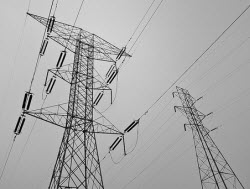Infrastructure including Telecommunications Strategy Report
Infrastructure including Telecommunications Strategy Report Summary
Table of Contents
- Introduction
- Economic Contributions of Infrastructure
- Short-term Construction Effects
- 2009 Federal Stimulus Package
- Productivity Effects
- Paying for Public Infrastructure
- Example of Simulated Investments
- Conclusion
 This abbreviated strategy paper provides an overview of the economic contributions of infrastructure in our region, including transportation, electricity and natural gas, telecommunications, water disposal and recycling, water management, public buildings, and convention facilities. RCF Economic and Financial Consulting, who prepared the report, also offers 25 specific economic development recommendations for these infrastructure systems.
This abbreviated strategy paper provides an overview of the economic contributions of infrastructure in our region, including transportation, electricity and natural gas, telecommunications, water disposal and recycling, water management, public buildings, and convention facilities. RCF Economic and Financial Consulting, who prepared the report, also offers 25 specific economic development recommendations for these infrastructure systems.
Two common findings have emerged from this study. First, the responsibility for urban infrastructure is highly fragmented, and some infrastructure systems function at a higher level than do others. Second, some infrastructure systems are in more urgent need of improvement than others, although they all need improvement taking the 2040 horizon. A basic conclusion is that CMAP can usefully serve as advisor and catalyst for all infrastructure systems.
A sample of findings:
Deferred Maintenance:
- Major metropolitan areas rely on a large number of infrastructure systems, and many of these systems suffer from deferred maintenance. The Center for American Progress estimated that $1.6 trillion investment would have been needed to fix public infrastructure systems as of 2005. This national figure translates into $52 billion for the Chicago metropolitan area, based on the fact that the metropolitan area produced 3.26% of the Gross Domestic Product.
Return on Investment:
- The report estimated that a $2 billion investment in our region's transportation infrastructure could yield an annual $2.2 billion return, due to positive impacts from the commercial transportation industry and reductions in commuting times.
"Spillover" Effects:
- Infrastructure in the central cities of major metropolitan areas provide benefits that spill over beyond city limits to residents of surrounding suburban communities. A study of 30 U.S. metropolitan areas estimated that a 1% increase in central city infrastructure would produce a 0.61% increase in suburban house values. Thus, for an average-sized city, a $1 billion expenditure on infrastructure, with no tax increase, would increase suburban housing values by $3 billion.
If you're interested in learning more about infrastructure including telecommunications, please download the following CMAP strategy report. Comments and criticisms are encouraged.
Photo by thomas.merton from ourExplore Northeastern Illinois Flickr Pool.
|
Links |